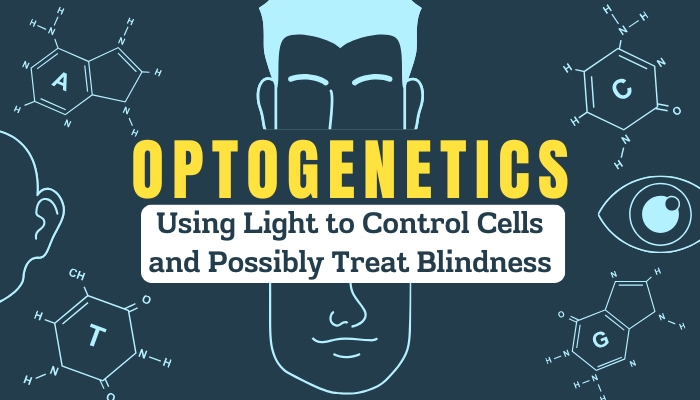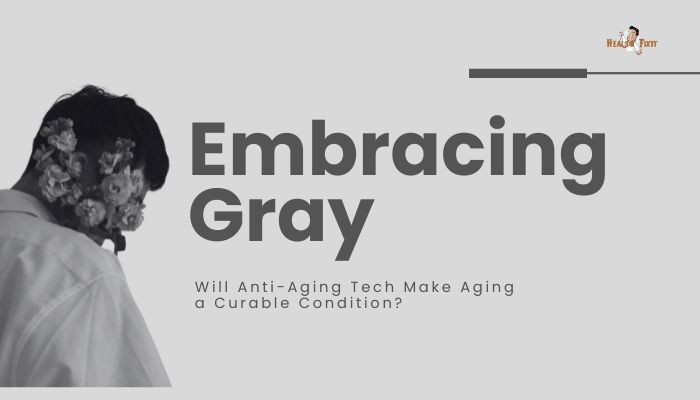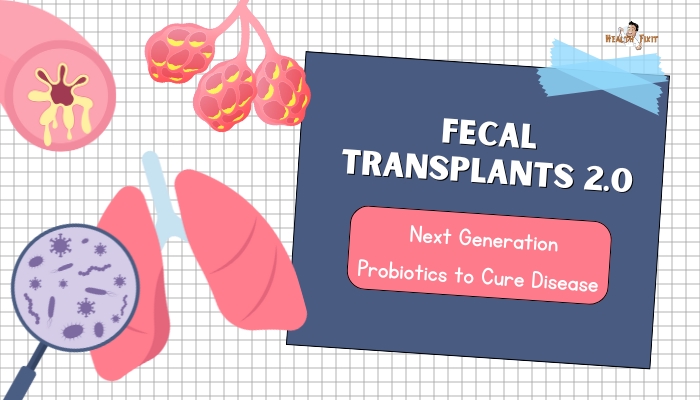Introduction
Optogenetics—the technique of genetically modifying cells so they respond to light—has transformed neuroscience research.
By inserting genes for light-sensitive proteins (like channelrhodopsins) into specific neurons, scientists can turn electrical activity “on or off” with pulses of light.
Beyond basic research, optogenetics shows promise in restoring sight for certain forms of blindness
reprogramming lost light sensitivity in retinal cells. This article explores the fundamentals of optogenetics, how it might help treat blindness, and the challenges remaining before it sees clinical mainstream use.
1. What Is Optogenetics?
Genetic Engineering for Light Sensitivity
Optogenetics merges genetics and optics: researchers deliver genes encoding light-gated ion channels (commonly from algae or bacteria) into target cells—like neurons. When illuminated with the right wavelength, these channels open or close, altering the cell’s electrical activity in real time.
Precise Cell Control
By choosing cell-type-specific promoters, scientists can ensure only certain cells (e.g., specific neurons in the retina) express these light-activated proteins. This allows extremely targeted experiments or therapies—spatially and temporally controlling cell function via light pulses.
2. Historical Impact in Neuroscience
Revolutionizing Brain Research
Optogenetics gave neuroscientists an unprecedented tool—manipulate a subset of neurons while leaving others untouched, all with precise timing. This approach uncovered how certain neural circuits govern behaviors, memory formation, or pathological states (like seizures).
Potential Therapeutic Avenues
Findings from these fundamental studies laid the groundwork for direct clinical applications—especially in diseases with dysregulated neuronal firing (e.g., Parkinson’s) or degenerative conditions (like blindness).
3. Optogenetics for Blindness Treatment
The Visual Pathway Issue
In retinitis pigmentosa or advanced macular degeneration, the retina’s photoreceptors (rods/cones) degrade, leaving patients with little to no light perception. However, other retinal cells (like bipolar cells or ganglion cells) remain partially intact.
Reintroducing Light Sensitivity
Optogenetic therapies aim to insert light-sensitive proteins (e.g., channelrhodopsin variants) into these surviving retinal cells. With the correct gene vector
these cells become surrogate photoreceptors. When external light stimulates them, they signal the brain, bypassing lost rods/cones.
Progress in Early Trials
Several biotech firms and labs are testing optogenetic approaches in small clinical trials.
Using specialized goggles (which convert visual scenes into certain wavelengths) can ensure the new photosensitive proteins respond effectively.
Patients with advanced retinal degeneration might recover partial sight—like detecting shapes or motion.
4. Technical and Practical Challenges
Efficient Light Delivery
Optogenetically modified retinal cells require sufficient light to activate. Because channelrhodopsins can demand brighter intensities or specific wavelengths, special goggles or implants might be needed. Achieving natural visual acuity in varied lighting conditions is complex.
Long-Term Stability
Will the introduced genes and proteins remain stable for years, or do they degrade over time, requiring repeated treatments? And how does the immune system react to these foreign opsins? Ensuring durability and minimal immunological risk is vital.
Resolution and Complexity of Vision
Even if bipolar or ganglion cells function as new photoreceptors, replicating the resolution and color discrimination of healthy rods/cones is challenging. The retina’s structure is nuanced; capturing that detail might require advanced opsin design or layered approaches.
5. Beyond Blindness: Other Medical Applications
Neurological Disorders
Researchers investigate optogenetic implants to treat Parkinson’s, depression, or chronic pain—directly modulating brain circuits with light.
Instead of continuous deep brain stimulation with electrodes, targeted pulses of light could fine-tune dysfunctional neural pathways more precisely.
Cardiac Arrhythmias
Some labs test whether heart muscle cells engineered to respond to light can help correct arrhythmias. A gentle optical pacemaker might be a future alternative to standard electrical pacemakers, though it’s still purely experimental.
Immune System Control
Early-stage research tries guiding immune cells’ behavior (like T cells) with optogenetics. If immune cells can be turned “on” or “off” by light, it might lead to novel therapies for autoimmune conditions or advanced immuno-oncology.
6. Ethical and Safety Considerations
Genetic Modifications
Optogenetic therapies rely on viral vectors or gene editing. Patients must weigh potential off-target effects or immune reactions. Regulatory bodies will require robust evidence of safety and minimal ecological concerns (like gene transfer to unintended tissues).
Long-Term Effects Unknown
As with any gene-based therapy, the long-term consequences or stability remain uncertain. If repeated re-administration or special hardware is needed, cost and quality-of-life factors must be addressed.
Access and Cost
Advanced gene therapy or specialized wearable devices can be expensive. If proven successful, ensuring equitable access so that less privileged populations also benefit is a key policy challenge.
7. Future Outlook
Improved Opsins and Tools
Researchers continually refine opsins with higher light sensitivity, faster kinetics, or broader color responsiveness—paving the way for more naturalistic visual input if used for blindness or more efficient neuronal control for brain therapies.
Minimally Invasive Delivery
Gene therapy methods that minimize invasiveness—like subretinal injections or targeted vectors—will likely evolve. Some envision advanced nanoparticle carriers or biodegradable scaffolds, simplifying administration for the patient.
Partnerships and Clinical Trials
Industry collaborations, philanthropic backing (like from foundations for blindness), and academic consortia can fast-track trials. The next decade may see large, multi-center studies for optogenetic blindness treatments, especially if early-phase results remain positive.
Practical Tips for Patients and Clinicians
- Stay Updated: Clinical trials for optogenetic blindness therapies exist, though limited. Check trial registries or specialized research hospitals.
- Evaluate Realistic Expectations: Early therapies may restore partial vision or basic shape recognition, not perfect sight. Clear communication with trial teams is crucial.
- Weigh Risks: As with any experimental gene therapy, weigh potential side effects vs. the possibility of improved function. Thoroughly discuss with a retinal specialist or genetic counselor.
- Future is Emerging: Even if not widely available now, breakthroughs might accelerate. Maintain standard care (e.g., assistive devices, protective eyewear) until or unless an optogenetic therapy is proven and accessible.
Conclusion
Optogenetics has opened a thrilling chapter in biomedicine, letting scientists modulate cell activity with pulses of light.
While most recognized for revolutionizing neuroscience labs, its potential in restoring vision stands out as a tangible real-world application.
Trials seeking to re-awaken retinas have begun—showing that clinically translating optical cell control is not only possible but may be on the near horizon.
Despite challenges in light delivery, immune response, and the complexity of replicating normal vision, the foundational science is compelling.
If we can harness optogenetics safely and effectively, millions affected by retinal degenerative diseases could benefit from a new wave of therapy that literally shines a light on lost sight.
References
- Deisseroth K. Optogenetics: 10 years of microbial opsins in neuroscience. Nat Neurosci. 2015;18(9):1213–1225.
- Busskamp V, et al. Genetic reactivation of cone photoreceptors restores visual responses in retinitis pigmentosa. Science. 2010;329(5990):413–417.
- Sengupta P, Garrity PA. Sensing temperature by thermosensitive neurons and channels in Drosophila. Nat Rev Neurosci. 2014;15(11):696–708. (Optogenetics reference in context)
- Gauvain G, et al. Optogenetic therapy in retinitis pigmentosa. Ophthalmology. 2020;127(6):835–842.
- Chen SX, et al. Partial vision restoration in advanced retinitis pigmentosa using optogenetic strategies. Curr Biol. 2021;31(6):R327–R330.
- Kleinlogel S, et al. Challenges and advances in optogenetic therapy for vision restoration. Prog Retin Eye Res. 2022;84:100956.
- Klapoetke NC, et al. Independent optical excitation of distinct neural populations. Nat Methods. 2014;11(3):338–346.
- Kronenberg S, Freed J, Freedman B. Neuropsychiatric applications of optogenetics. Neuropsychopharmacology. 2019;44(1):3–16.
- Sahel JA, Roska B. Gene therapy and optogenetics in the retina: a new light in neurodegeneration. Science. 2013;342(6165):805–810.
- Cronin T, et al. Hurdles and future directions for optogenetic therapy for retinal diseases. Transl Vis Sci Technol. 2020;9(7):25.




